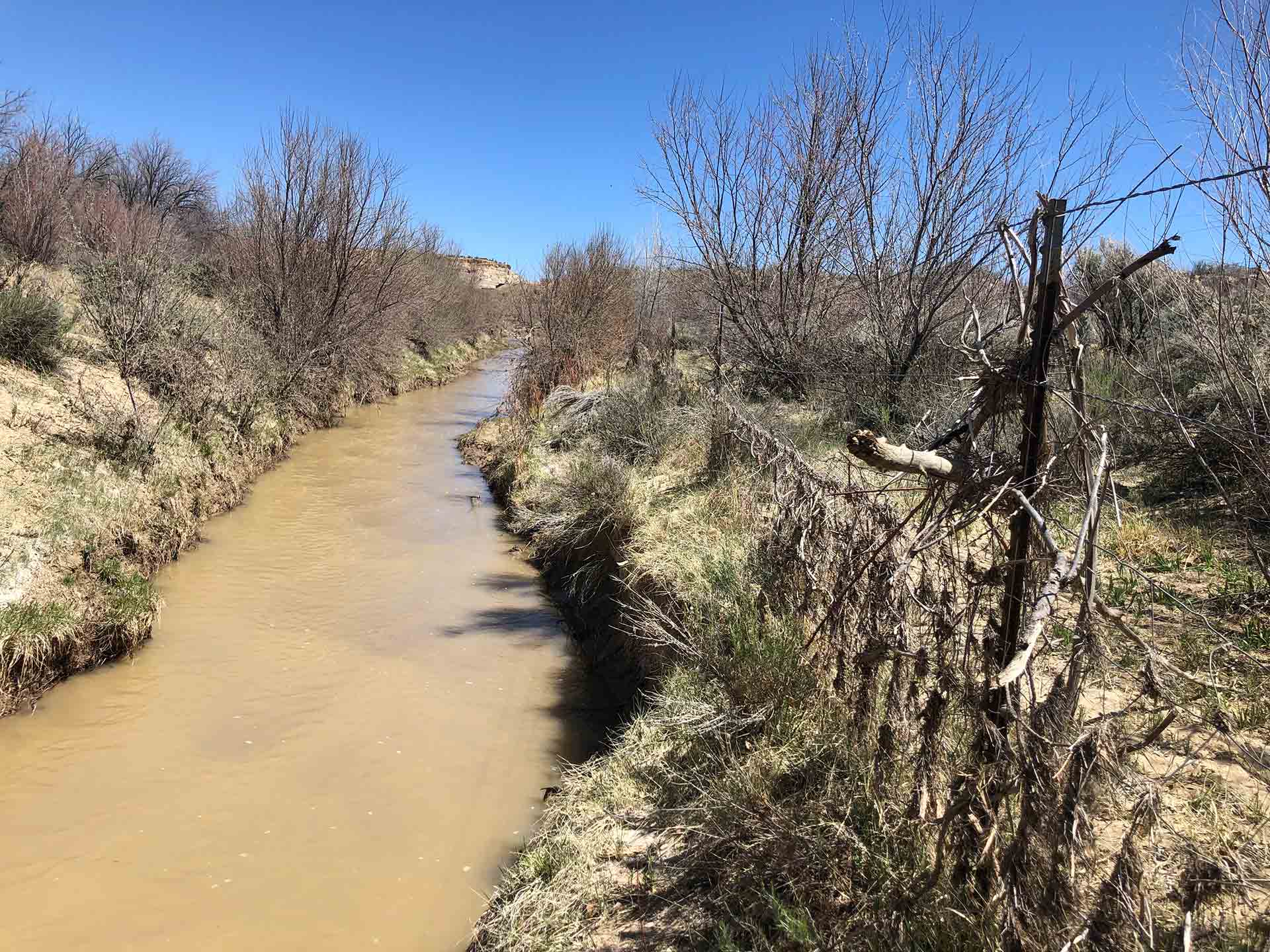Early morning on Rio Puerco.
Restoring Rio Puerco, Naturally
Over the past 50 years, the Rio Puerco watershed has suffered severe degradation from accelerated erosion and massive sediment loads, making it the single largest source of suspended sediment flowing into the Rio Grande. In fact, the US Army Corps of Engineers ranks its erosion rates as the highest in the country. Now, Rio Grande Return is building on past restoration work with an ambitious new effort, using low-tech, process-based restoration (LTPBR) techniques to restore beaver habitat, reduce sediment runoff, and reconnect the floodplain in this deeply damaged watershed.
By planting native riparian and wetland vegetation, removing and repairing old fencing, and constructing Post-Assisted Log Structures (PALS) and Large Woody Debris Structures (LWDS), RGR is jumpstarting ecosystem recovery across 2.41 miles of degraded stream – bringing life back to approximately 90 acres of riparian wetland. These natural structures help slow water, trap sediment, raise the water table, induce meandering, and create inviting conditions for beavers to return and maintain the habitat over time. This is common sense solution for the Rio Puerco, as there are beavers living upstream and there are signs that beavers have visited project area.
A robust monitoring program will track improvements in water quality, groundwater retention, wildlife habitat, and ecological function – data that will help inform future watershed-scale restoration and mitigation strategies.
Thanks to a long-term partnership with the New Mexico State Land Office and an innovative approach to developing the first Conservation Stewardship Lease of state trusts lands, RGR will lease and manage the project site for years to come, ensuring lasting impact for the Rio Puerco and the greater Rio Grande watershed.

Debris on the fence line shows that flow in the incised Rio Puerco still gets on to the adjacent floodplain in some areas.
